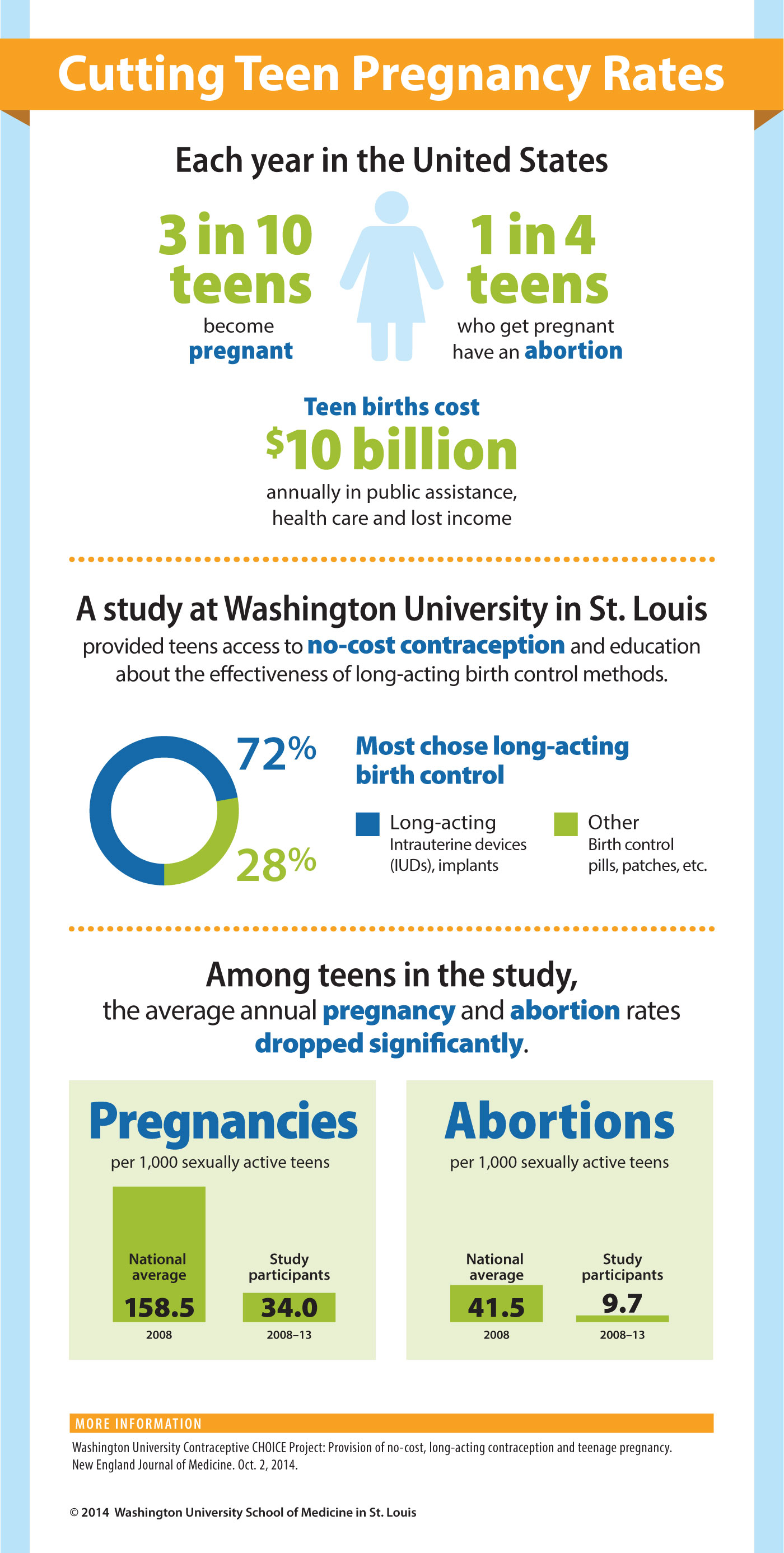Access to free birth control reduces abortion rates
A study from Washington University School of Medicine shows that providing free birth control to women reduces unplanned pregnancies and abortions

Jeffrey Peipert, MD, PhD (left) with resident Lindsay Kuroki, MD. Peipert leads a study showing free contraception reduces unplanned pregnancies.
Unplanned pregnancies are a significant problem in the United States. According to a 2012 Brookings Institution report, more than 90 percent of abortions occur due to unintended pregnancy.
Each year, about 50 percent of all pregnancies that occur in the US are not planned, a number far higher than is reported in other developed countries. About half of these pregnancies result from women not using contraception and the other half from incorrect or irregular use.
A new study by investigators at Washington University reports that providing birth control to women at no cost substantially reduces unplanned pregnancies and cuts abortion rates by a range of 62 to 78 percent compared to the national rate.
Contraceptive choice
This study, called the Contraceptive CHOICE Project, enrolled 9,256 women and adolescents in the St. Louis area between 2007 and 2011. Participants were 14 to 45 years of age, at risk for unintended pregnancy and willing to start a new contraceptive method.
Participants had their choice of birth control methods, including:
- longer-acting birth control such as intrauterine devices (IUDs) and implants
- shorter-acting methods like birth control pills, patches and rings.
The women were counseled about the different methods, including their effectiveness, risks and benefits. The extremely low failure rate (less than 1 percent) of IUDs and implants over that of shorter-acting forms (8-10 percent) was emphasized. In all, about 75 percent of women in the study chose IUDs or implants.
Drop in abortion rates
From 2008 to 2010, annual abortion rates among study participants ranged from 4.4 to 7.5 per 1,000 women. This is a substantial drop (ranging from 62 to 78 percent) compared to the national rate of 19.6 abortions per 1,000 women in 2008, the latest year for which figures are available.
 Related: Free birth control cuts teen pregnancies, abortions
Related: Free birth control cuts teen pregnancies, abortions
When barriers to contraception such as cost and lack of education were removed, most teens in a Washington University study opted for long-acting birth control
The lower abortion rates among Choice study participants also is considerably less than the rates in St. Louis city and county, which ranged from 13.4 to 17 per 1,000 women for the same years.
Among girls ages 15 to 19 who had access to free birth control provided in the study, the annual birth rate was 6.3 per 1,000, far below the U.S. rate of 34.3 per 1,000 for girls the same age.
Short vs. long term methods
While birth control pills are the most commonly used reversible contraceptive in the United States, their effectiveness hinges on women remembering to take a pill every day and having easy access to refills.
In contrast, IUDs and implants are inserted by health-care providers and are effective for 5 to 10 years and 3 years, respectively. Despite their superior effectiveness over short-term methods, only a small percentage of U.S. women using contraception choose these methods. Many can’t afford the cost of IUDs and implants, which can cost more than $800 and may not be covered by insurance.
“Unintended pregnancy remains a major health problem in the United States, with higher proportions among teenagers and women with less education and lower economic status,” says lead author Jeffrey Peipert, MD, PhD, a Washington University obstetrician and gynecologist at Barnes-Jewish Hospital. “The results of this study demonstrate that we can reduce the rate of unintended pregnancy, and this is key to reducing abortions in this country.”
View a video about the Contraceptive CHOICE Project.






